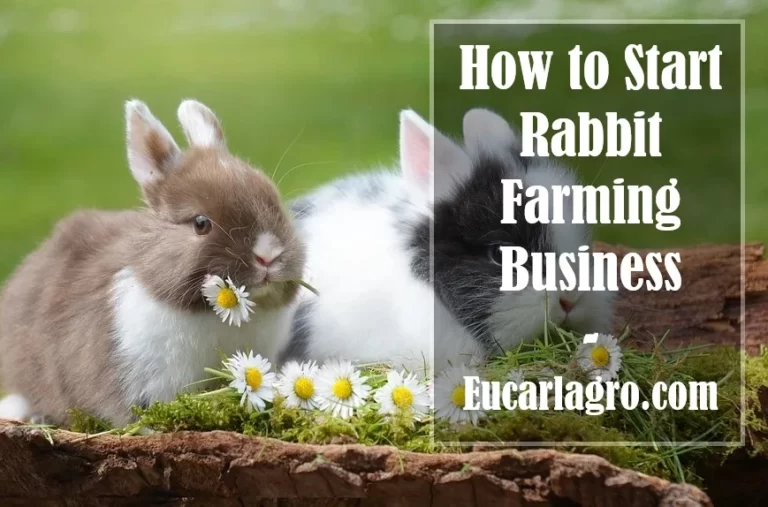Rabbit Housing Systems: Steps to Constructing a Durable Rabbit House
To start a successful rabbitry farming business, you need to plan for a good housing system for your rabbits. Rabbit animal production/husbandry does not necessarily cost much as you can build up a rabbit house by yourself right in your garden.
Since they can’t communicate their thoughts with you physically, this article would help you know how best you can house your rabbits for optimum development.
We highlighted all you need to know about rabbit housing, how you can scale up your rabbitry farming using the right techniques, and some other juicy details below.
You would be able to spot some of these tacts if you carefully read this post till the end.
Let’s dive right into rearing healthy rabbits with a proper definition of what housing rabbits mean
Meaning of Rabbit Housing Systems

Rabbit housing involves the construction and facilitation of structures that ensure adequate care and maintenance of rabbits.
There are different varieties of rabbits that require specific caring techniques and harbors. Wild rabbits would do better in rabbit holes and burrows while domestic rabbits are best suited for rabbit hutches. A system of burrows for rabbits living together is known as a warren.
Whether you wish to keep rabbits in your home as pets or you decide to go into commercial rabbit farming, you would have to make provisions for where the rabbits will stay.
Rabbits can be kept in cages or hatches depending on your needs and preferences. Whichever one you go for must be conducive for the bunnies.
Bunnies may take up to 6 months to get fully adjusted to their new home, so you should be understanding when they act like they don’t like the new house you have just erected for them
Now you know what a good rabbit house is, let us get into details on how a proper rabbit housing construction can be done. For this, we would have to pick a site for housing the bunnies.
Location For Rabbit House
Where should I keep my rabbits?

A rabbit housing should have proper heating and lighting systems. The site you should use in constructing a rabbit house should be well lighted, but possibly away from the sun.
Rabbits are sensitive to harsh weather and increasing temperatures, therefore, you should get them away from those whenever you can. They are also reactive to excess intake of fresh air as it can result in pneumonia.
It should be a place that has a good shade and allows for cross ventilation. Centre ridge ventilation helps to prevent excess intake of moisture. A fan-type air control system is also advised for large-scale rabbit housing.
The collecting drain for their urine should be away from their feeding through.
If the rabbit house would be on the floor, the room should be warmed up. Air pollutants like smoke, dust, and excess moisture are not healthy for rabbits, hence, they should be kept away from those.
Domestic rabbits should be kept away from pets like dogs and cats since they are both predators of the bunnies. You can fence the area to also keep out snakes.
Rabbits of the same age perform better in the same hutches than those that are not mates. Younger bunnies may be injured by the older ones, so you need to keep them in the right cages.
Types of Rabbit Housing Systems
You can keep domestic rabbits in several housing systems. This can be indoors or outdoors; in hutches or cages.
1. Indoor Housing Systems for Rabbits
The following are the different methods of indoor housing for rabbits:
1. Indoor Cages
Rabbit cages can be made with wood or wire meshes. However, wood is not advisable for cage making as rabbits can easily chew on them, absorbs urine, and is hard to clean.
Wire meshes on the flip side can be galvanized and roofed with asbestos or GI roofing sheets for keeping rabbits. the top should be made with wire mesh as the roof would be higher than this limit.
The wire thickness for the walls of the cage should be 14 – 16 gauze while the area can be up to 1.0 × 1.0. The floor should have grid openings large enough to allow the passage of feces and small enough to accommodate easy movements.
The area should be 0.5 × 0.5 but can reach up to 0.75 for very large rabbits in a square cage. Rectangular cages can also be made using a dimension of 0.5 – 0.75. The cages can be stacked on each other or racks as in multiple tiers or kept in a single layer.
2. Suspended Cages For Rabbits
This is a low-cost indoor housing system for rabbits. Although it can be used for outdoor rabbit housing and in commercial rabbit production.
Here, the rabbit cages hang from the ceiling or sides of the walls. It is cheap and easy to maintain plus it is also very hygienic. The downside here is that this type of rabbit housing system makes the animals more vulnerable to cold and harsh winds. Tarpaulins help remedy the situation here.
3. Low-cost Indoor Housing
Here, the walls of the rabbit house are made with bamboo sticks while the roof is formed from raffia and thatch palms. Though this housing is less durable than other types, it is suitable because it is cheap, and protects the rabbits from heat.
2. Outdoor Rabbit Housing
For commercial rabbit farming, the indoor rabbit housing becomes inefficient, hence, a new system of housing has to be incorporated. Below are some of the very common types.
1. Floor System Of Rabbit Housing

This is synonymous with the deep litter system of poultry housing. The area of the floor is 20 × 15 ft, the height of the brick walls that lie on the floor can be 3.0 ft while the wire gauze lair over the bricks can reach up to 6.0 ft.
You should spread sawdust on the floor so you can easily clean up the floor. More than one feeder and drinking trough should be kept in the room. The spread of rabbit diseases here is high since a large number of rabbits freely interact with each other.
2. Standing Hutches
The standing rabbit hutch is the most common type of rabbit housing for commercial rabbit farming. You can use this method as a beginner and yet find it very convenient and easy to use.
Standing hutches for rabbits are cheap, and ideal for a small rabbit business. The body frame can be made with wood or iron.
Wheels can be customized on the hutches to freely move the rabbits if you keep them as pets. If you intend to keep them in a place, then a tree shed and padded roofing with straw thatch and coconut leaves will help keep the interior cool.
3. Battery Cage System Of Housing Rabbits

The cages here are similar to the battery cage system of poultry housing; the rows and deck arrangements are the same in both. Battery cages are intended to maximize space, especially in large-scale rabbit farming.
It is not advisable to house a pregnant doe in a battery cage to limit cases of spontaneous abortions. If your rabbit should fall sick here, you must separate it from the cages immediately.
4. Housing Rabbits in Stacked Cages
For commercial rabbit farmers, this housing strategy comes in handy as you get to manage space and cut down expenses on construction materials for your rabbit house.
In this system, the room or area where the cages or hutches will be stacked in must be properly ventilated. If not, the rabbits may suffocate. You may need to get air conditioners for the housing if cross ventilation is not assured.
Factors to Consider in the Housing Management of Rabbit
1. Number of Rabbits to be Housed
For a single cage or hutch, two or three rabbits are best kept to ensure that they feed adequately. Though it is more expensive to keep large numbers of rabbits in groups of two’s and three’s, this would help you check the development of each rabbit before they are ready to be marketed.
A crowdy rabbit house can cause reduced fur quality as the rabbits feed on each other’s furs. Morbidity and mortality rate are also increased from fighting and injuries.
2. Flooring a Rabbit House
For optimum performance, the floor space should be more in a deep litter system or an indoor cage. For an outdoor hutch, less floor space per animal is recommended.
3. Weather Conditions
The rabbits should be well ventilated regardless of climatic changes. However, you should keep in mind that there is excess air coming into the rabbit’s house.
Materials Used In Rabbit Housing
Depending on your budget for the housing, the number of rabbits to be kept, and the size of each rabbit, the following are the commonest types of materials used in constructing a good rabbit housing:
- Thatch and Straw
- Raffia Palm
- Bamboo sticks
- Coconut leaves
- Bricks
- Asbestos and GI roofing sheets
- Metal frames
- Wire gauze/meshes
How To Use The Different Types Of Rabbit Hutches Effectively
- Breeders, pregnant does, and adult bucks must be kept separately in individual cages. Angora, younger bucks, and non-breeding does can be kept together in a single cage.
- Adequate food and water supply must be made available to prevent feuds in the rabbit cages. Fresh hays must be available at all times as the rabbits would feed on wooden and thatch construction materials if they are hungry
- Light, air, and good hearing are key for a successful rabbit housing. You can keep them lighted for 12 hours and go off for the other 12 hours for optimum breeding performance.
- Proper hygiene must be maintained on the rabbit farm to reduce the spread of infections. The cages, feeders, and drinking troughs should be cleaned regularly and sanitized to inoculate the environment. Raising Rabbits in an unhygienic place hampers development greatly.
Conclusion
Having gone through the basic requirements for constructing a proper rabbit house above, you should be ready to get started with your rabbit housing. We mentioned some of the key factors that will be beneficial to your rabbit farming business.






